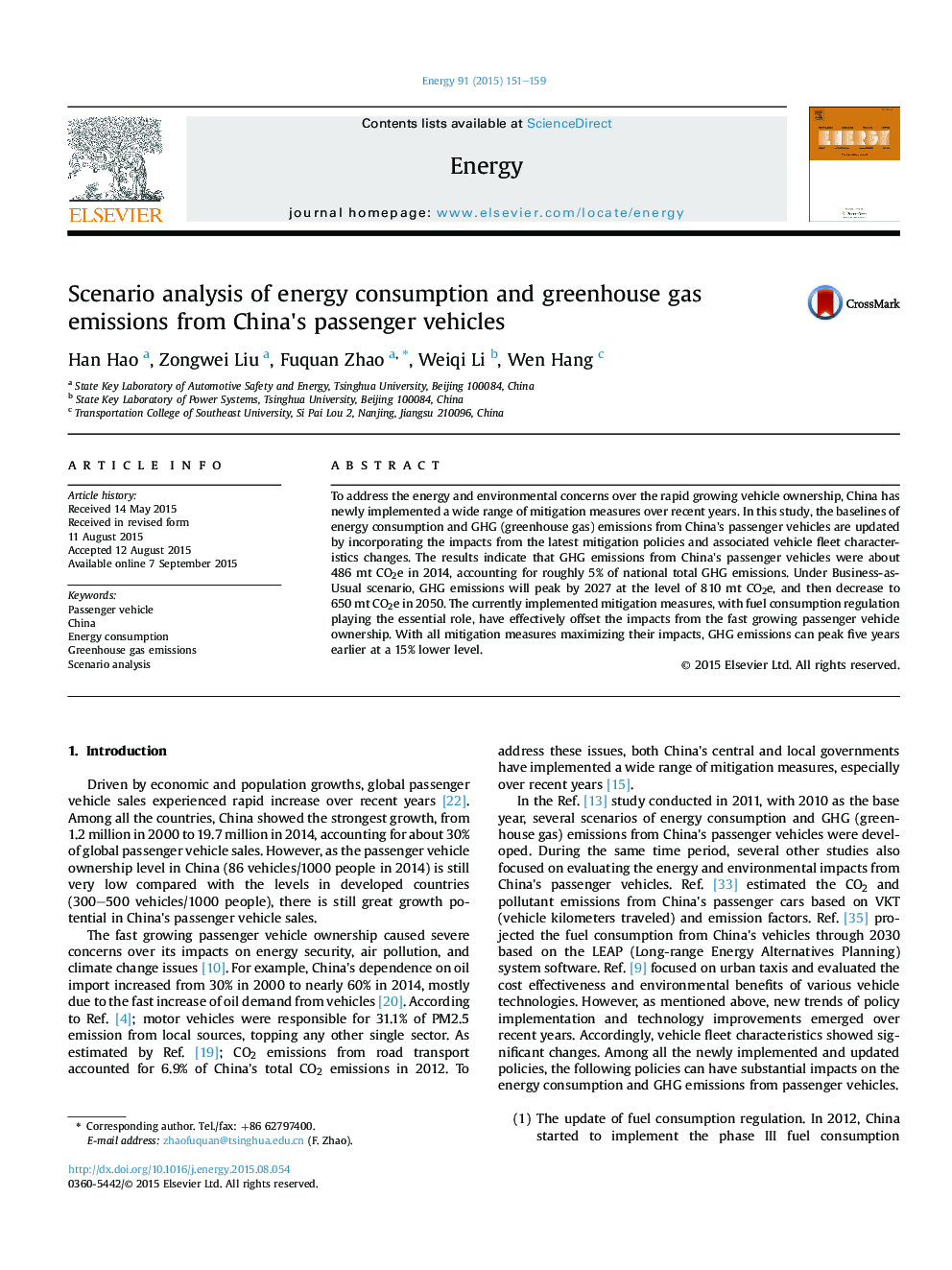| کد مقاله | کد نشریه | سال انتشار | مقاله انگلیسی | نسخه تمام متن |
|---|---|---|---|---|
| 1731480 | 1521455 | 2015 | 9 صفحه PDF | دانلود رایگان |
• The baseline of GHG (greenhouse gas) emissions from China's passenger vehicles is updated.
• A bottom-up accounting framework is established to estimate GHG emissions from passenger vehicles.
• GHG emissions from passenger vehicles accounted for 5% of China's total GHG emissions in 2014.
• GHG emissions will peak by 2027 at the level of 810 mt CO2e, and then decrease to 650 mt CO2e in 2050.
• Fuel consumption regulation plays an essential role in constraining GHG emissions growth.
To address the energy and environmental concerns over the rapid growing vehicle ownership, China has newly implemented a wide range of mitigation measures over recent years. In this study, the baselines of energy consumption and GHG (greenhouse gas) emissions from China's passenger vehicles are updated by incorporating the impacts from the latest mitigation policies and associated vehicle fleet characteristics changes. The results indicate that GHG emissions from China's passenger vehicles were about 486 mt CO2e in 2014, accounting for roughly 5% of national total GHG emissions. Under Business-as-Usual scenario, GHG emissions will peak by 2027 at the level of 810 mt CO2e, and then decrease to 650 mt CO2e in 2050. The currently implemented mitigation measures, with fuel consumption regulation playing the essential role, have effectively offset the impacts from the fast growing passenger vehicle ownership. With all mitigation measures maximizing their impacts, GHG emissions can peak five years earlier at a 15% lower level.
Journal: Energy - Volume 91, November 2015, Pages 151–159
